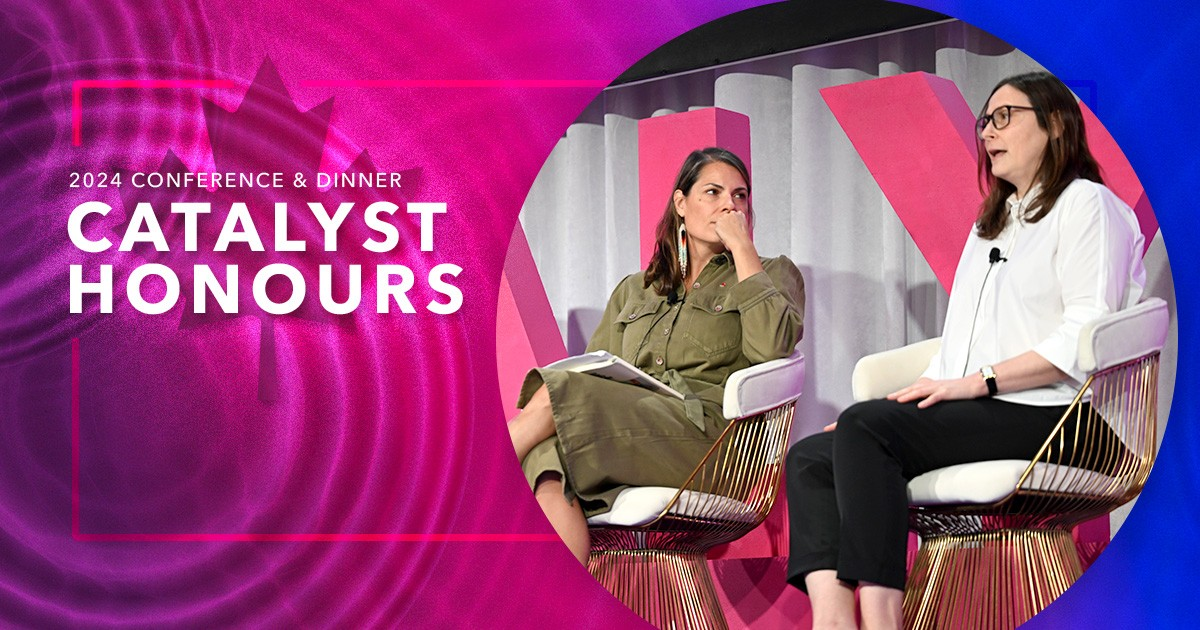Indigenous reconciliation and inclusion in the workplace

Executive Summary
Experts share what every organization should be doing to address 200 years of repression of Indigenous peoples.
After a decade, Canada has yet to complete one of the Truth and Reconciliation Commission’s 94 calls to action, which are actionable policy recommendations meant to enable healing for Indigenous peoples.
A week after Truth and Reconciliation Day, Scotiabank’s Richel Davies, Director of Indigenous Inclusion, and Myan Marcen-Gaudaur, Director, Social Impact & Reconciliation, outlined what every organization — not just in Canada — should be doing to address 200 years of repression of Indigenous peoples.
There cannot be reconciliation without truth, said Marcen-Gaudaur. “We cannot do this work without first acknowledging the deep and ongoing injustices faced by Indigenous communities,” she said. “It means listening, advocating, confronting the uncomfortable truths of Canadian history and present-day colonialism."
Understand barriers
Davies shared a formative experience from her youth to illustrate the kinds of barriers Indigenous people face. Setting the bar low and seeing her as a stereotype, her high school vice principal told her that “If you can just not get pregnant, you might have a job at Safeway someday.” Davies told the audience that she is the first from her community to have a corporate job and “still far too many Indigenous kids are being told, be a nurse’s aide, not a doctor. Be a general contractor not an architect.”
Expand your network
Davies recounted how the daughter of a former colleague graduated college, joined LinkedIn, and immediately had access to her father’s hundreds of contacts. “We know Indigenous peoples have the education and experience but not the networks, connections, and all the other opportunities that every other Canadian seems to have,” she said.
Davies challenged the audience to expand their networks. “You need to know Indigenous folks. If you don’t see them, acknowledge that’s a problem. Recognize that as a socioeconomic barrier that you are perpetuating,” she said. She told people to “Look outside your networks, the schools you usually recruit from. I hear ‘I’d really like to hire someone Indigenous, but I tried, and I couldn’t.’ You mean you didn’t know anybody like you who happened to be Indigenous. That means your initiatives aren’t working.”
“In order to see true equity we need to see Indigenous peoples in culture change and decision-making areas of organizations,” Davies said, adding that “reconciliation can help with equity initiatives.” However, “think outside of DEI to get Indigenous work done,” Marcen-Gaudaur said. “Not to say anything about other equity-deserving groups at all, but…this is about redressing 200-plus years of assimilation policies that were specific only to our ancestors.”
Encourage shared accountability
As for how to approach this work, Marcen-Gaudaur cautioned that “Building reconciliation does not belong to one person or one team. It only works if it belongs to everybody and if everybody understands their shared accountability.”
What worked for Scotiabank was collaborating with a consultancy called Creative Fire and including people at every level of the organization and beyond. “We sought from end to end the perspectives of many — internally and externally rights holders, Indigenous employees, clients, community — at all stages of the process,” she said.
Align actions with values
It’s important to realize that not every company is ready for this work, Marcen-Gaudaur said, and warned people leading these efforts to make sure there’s funding if they get the green light. “Harm is done by organizations that say yes with their words and no with their budgets. That has a lasting negative impact that is not easily forgotten.”
She added that it is important to move slowly. “We sought perspectives of clients, communities. We moved at the speed of consensus building…The journey to educate can’t be rushed.”
Final takeaways
“Momentum is growing around reconciliation,” Marcen-Gaudaur said. “Indigenous people are interviewing us when they interview for jobs. Indigenous clients have options. If banks aren’t set up with education, sensitivity training, they’ll take their business elsewhere. We are moving towards a 100 billion dollar Indigenous economy in this country. Those who aren’t doing this work will be left behind.”
Davies suggested one critical way that helping Indigenous people move forward in the workplace can benefit society. “Indigenous innovation is needed to solve the environmental crisis,” she said. “Recognize that reconciliation is important but also integral because it will help us solve the problems of today so we can all have a tomorrow.”
This is a recap of the conference session “A Call to Action: Indigenous Reconciliation and Inclusion in the Workplace” at Catalyst Honours in Toronto on 7 October 2024.
Want to know about next year’s Catalyst Honours? Sign up now and we’ll email you when registration goes live.